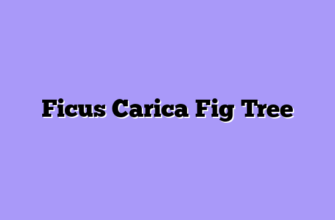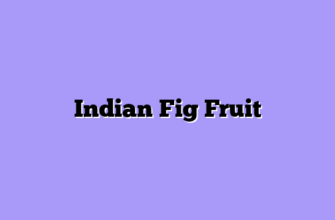I still remember the afternoon I first tasted a Magnolia fig. A fellow grower had brought a basket to a regional agricultural meeting, and when I bit into that amber-yellow fruit, time seemed to pause. The honey-sweet flavor, the strawberry undertones, the impossibly smooth texture—it was unlike any common fig I’d experienced. Right then, standing in that conference room with juice running down my chin, I decided I needed these trees in my orchard. That impulsive decision turned out to be one of the best calls I’ve made in my farming career.
The Magnolia fig, scientifically classified as Ficus carica ‘Magnolia,’ goes by several names depending on where you are. Some folks call it the Madonna fig, while others know it as the Brunswick fig or Ronde de Bordeaux (though purists will tell you that last one is technically a different cultivar—we’ll get to that debate later). In certain Louisiana communities where this variety thrives particularly well, locals simply call it the “yellow fig” or the “Brunswick.” Whatever name you use, you’re talking about one of the most reliable and productive fig varieties available to growers in the American South and similar climates.
Origins and Characteristics: What Makes Magnolia Special
The Magnolia fig carries an interesting heritage that’s somewhat murky, as is often the case with heirloom fruit varieties passed through generations of backyard growers before anyone thought to document them formally. Most historians trace its lineage to Mediterranean stock, likely arriving in North America during the colonial period. The variety found particular favor in the Gulf Coast states, where the humid subtropical climate proved ideal for its growth habit.
What sets this cultivar apart from its cousins like Brown Turkey or Celeste? Several distinctive features have made me a devoted advocate. First, the fruit itself is substantially larger than many common fig varieties—typically 2.5 to 3.5 inches in diameter when fully developed. The skin displays a gorgeous greenish-yellow to bronze coloring at maturity, sometimes with a copper blush where sun exposure is intense. That skin is also relatively tough compared to, say, a delicate Celeste, which means better handling characteristics and reduced splitting during wet periods.
The interior flesh ranges from light strawberry pink to amber, depending on growing conditions and ripeness level. I’ve noticed that fruits developing during cooler periods tend toward the pinker spectrum, while those ripening during peak summer heat lean more amber-gold. The texture is what really distinguishes Magnolia specimens in my experience—remarkably smooth and creamy, without the graininess some varieties exhibit. The flavor profile balances sweetness with just enough complexity to keep things interesting: prominent honey notes, hints of berry, and a finish that lingers pleasantly.
Key Magnolia fig characteristics:
- Large fruit size (2.5-3.5 inches diameter)
- Greenish-yellow to bronze skin with occasional copper blush
- Amber to strawberry-pink flesh
- Exceptionally smooth, creamy texture
- Complex sweet flavor with honey and berry notes
- Tough skin resistant to splitting
- Closed eye (bottom opening) that resists insect invasion
- Heavy production on both old and new wood
The closed eye is worth emphasizing because it addresses one of the most frustrating challenges fig growers face. Many varieties have open or partially open eyes that allow beetles, wasps, and other insects to enter the fruit. I’ve lost entire harvests to this problem with other cultivars. Magnolia’s tight eye substantially reduces insect damage, meaning cleaner fruits and less waste. In my humid climate where insect pressure runs high, this single trait makes Magnolia worth growing even if all its other characteristics were merely average—which they certainly aren’t.
Growing Requirements and Cultivation Practices
After cultivating Magnolia figs for seasons across different microclimates on my property, I’ve developed a solid understanding of what this variety needs to perform optimally. The good news? It’s relatively forgiving and adapts well to various conditions, making it suitable for both experienced orchardists and enthusiastic beginners.
Climate-wise, Magnolia thrives in USDA hardiness zones 7-10, with zone 8 representing its sweet spot. I farm in zone 9, and these trees are among my most reliable producers. They handle heat admirably—important in areas where summer temperatures regularly push into the 90s or even breach 100°F. Winter hardiness is respectable; the trees can tolerate temperatures down to about 10-15°F once established, though younger specimens need protection below 20°F. In zone 7, I’d recommend planting in a protected location and possibly providing winter protection during the tree’s first few seasons.
Soil preferences are refreshingly uncomplicated. Like most Ficus carica varieties, Magnolia performs well in a wide range of soil types provided drainage is adequate. My orchard sits on slightly alkaline clay loam, which isn’t ideal for many crops but works fine for these trees. I’ve seen successful Magnolia plantings in sandy coastal soils and heavier clay compositions. The key is avoiding waterlogged conditions—fig trees despise wet feet. If your site has drainage challenges, consider planting on berms or slopes where water naturally sheds away from the root zone.
Optimal planting protocol:
- Select a location receiving 6-8 hours of direct sunlight daily
- Test soil pH; Magnolia tolerates 6.0-8.0 but prefers 6.5-7.5
- Dig a planting hole twice as wide as the root ball but no deeper
- Amend only if soil is extremely poor; figs prefer lean conditions
- Position the tree at the same depth it grew in the nursery container
- Backfill with native soil, creating a slight basin for water retention
- Water thoroughly after planting, then maintain moderate moisture for the first season
- Apply 3-4 inches of organic mulch, keeping it away from the trunk
The fertilization approach I’ve developed for Magnolia differs slightly from my standard fig protocol. These trees are vigorous growers that can become overly vegetative if pushed too hard with nitrogen. I’ve learned this the hard way—my first season, I treated them like my other fruit trees, applying standard fertilizer rates. The result? Enormous vegetative growth, gorgeous foliage, and disappointing fruit production. Excessive nitrogen promotes leaf and stem growth at the expense of fruit development.
Now I take a minimalist approach. I apply a balanced fertilizer (something like 10-10-10) once in early spring just as buds begin swelling, using about half the rate I’d apply to, say, a peach tree of similar size. Then I follow up with a light application in early summer after the breba (first) crop finishes developing. That’s it. This modest feeding regime produces excellent results—plenty of vigorous growth without the vegetative excess that sacrifices fruiting.
| Growth Factor | Magnolia Fig Requirements | Management Notes |
|---|---|---|
| Sunlight | Full sun (6-8 hours daily) | Can tolerate partial shade but production decreases |
| Water | Moderate; 1-2 inches weekly | Reduce water as fruits ripen to concentrate sugars |
| Soil pH | 6.0-8.0 (optimal 6.5-7.5) | Tolerates both slightly acidic and alkaline conditions |
| Drainage | Good to excellent required | Plant on slopes or berms if drainage is questionable |
| Fertilization | Light; 2 applications annually | Excessive nitrogen reduces fruiting |
| Pruning | Minimal; shape and remove dead wood | Heavy pruning can delay fruiting |
| Cold hardiness | USDA zones 7-10 | Protect young trees below 20°F |
Pruning Magnolia figs requires restraint. These trees produce on both previous season’s wood (producing the early breba crop) and current season’s growth (producing the main crop). Heavy pruning eliminates potential fruiting wood and delays production. I focus on removing dead or damaged branches, eliminating crossing limbs that create crowding, and occasionally cutting back excessively long shoots to maintain manageable size. The open-center or vase shape works well, promoting good air circulation that reduces disease pressure in humid climates.
Production Characteristics and Harvest Expectations
One of the reasons Magnolia has become such a staple in my orchard relates directly to its impressive productivity. This isn’t a finicky, hit-or-miss variety that produces abundantly one season and barely at all the next. Magnolia delivers consistent, heavy crops with remarkable regularity, which from a commercial farming perspective makes it invaluable for planning and meeting customer expectations.
The fruiting pattern follows the typical two-crop schedule seen in many fig varieties. The breba crop develops in late spring to early summer on the previous season’s wood. These early fruits tend to be larger than the main crop, sometimes reaching nearly four inches in diameter on mature, well-established trees. The breba production on Magnolia is substantial—not all fig varieties produce significant breba crops, but this one certainly does. In my zone 9 climate, I’m typically harvesting breba fruits from mid-May through June.

Yield statistics are always tricky with fruit trees because production varies based on tree age, management, and growing conditions. That said, I can share some general expectations based on my experience and observations from fellow growers. A young Magnolia tree in its second or third fruiting season might produce 20-40 pounds of fruit annually. By the time trees reach five to seven seasons in the ground, production often climbs to 60-100 pounds per tree per year. Mature specimens—we’re talking trees ten-plus seasons old with optimal care—can produce 100-150 pounds or more annually.
Compare these figures to other varieties I cultivate. My Celeste trees, while producing earlier and more reliably after planting, top out at maybe 40-60 pounds per mature tree. Brown Turkey falls somewhere in the middle. Magnolia’s combination of large fruit size and heavy production creates impressive yields that translate directly to profitability for commercial operations or abundance for home growers.
Challenges, Solutions, and Why I Keep Coming Back
No variety is perfect, and Magnolia has its quirks and challenges. Being transparent about these helps set realistic expectations and prepares growers to handle issues when they arise. The most significant challenge I’ve encountered involves the tree’s vigor and ultimate size. Magnolia is not a compact variety. Left unpruned, these trees easily reach 15-20 feet tall and equally wide. For small urban lots or situations where space is limited, this expansive growth habit can be problematic.
I’ve addressed this through strategic pruning and, in some cases, by growing Magnolia in large containers where root restriction naturally limits size. Container cultivation isn’t my preferred approach for commercial production, but for customers with space constraints, I often recommend this method. A 25-30 gallon container can support a productive Magnolia tree that remains under 8 feet tall with annual pruning.
The other challenge relates to the tree’s heat and sun tolerance—or more specifically, fruit sun-scald during extreme heat. While the tree itself handles high temperatures beautifully, the large fruits can develop sunburn on their sun-exposed sides when temperatures exceed 95-100°F for extended periods. I’ve noticed this particularly affects the breba crop, which develops when the tree canopy is less dense. By mid-summer when the main crop is developing, the foliage canopy provides better fruit shading.
My solution has been simple but effective: I don’t worry about it too much. The sunburn typically affects only the exposed side of the fruit, leaving the rest perfectly edible. For fruits destined for jam, preserves, or other processed products, a bit of skin discoloration is completely irrelevant. For fresh market sales where appearance matters, I’ve learned to position harvest baskets to display the unblemished sides. Customers who care about such things never notice, and those who don’t care wouldn’t have minded anyway.
| Challenge | Severity | Practical Solutions |
|---|---|---|
| Large tree size | Moderate | Container growing, strategic pruning, adequate spacing |
| Fruit sun-scald in extreme heat | Minor | Accept cosmetic damage, selective positioning for sales, no intervention needed |
| Bird predation at ripeness | Moderate | Netting, harvest slightly early, plant extra trees |
| Root suckering | Minor | Remove suckers regularly, doesn’t affect tree health |
| Slow establishment first year | Minor | Patience, consistent watering, understanding this is normal |
Bird predation deserves mention because it’s universal to all fig cultivation, not specific to Magnolia. When these fruits start ripening, every mockingbird, blue jay, and crow within a half-mile radius seems to know immediately. I’ve tried various deterrents with mixed results. Netting works but is labor-intensive to install and remove. Shiny tape and fake predators provide temporary relief at best. My current strategy involves planting more trees than I strictly need for production targets, essentially sharing some percentage of the harvest with wildlife. It’s not the most economically efficient approach, but it maintains my sanity and keeps the local bird populations happy.
Culinary Applications and Market Reception
From a utilization standpoint, Magnolia figs are remarkably versatile. The large size makes them excellent for fresh eating—you get substantial bites rather than the one-or-two-bite experience with smaller varieties like Celeste. The tough skin, while edible, is thick enough that some people prefer to peel it, revealing that gorgeous amber flesh beneath. I usually eat them skin-on straight from the tree, but for more refined presentations or when serving to others, peeling creates a more elegant appearance.
The flavor intensity makes Magnolia ideal for preserves, jams, and conserves. The natural pectin content is good, though I typically add commercial pectin to ensure proper gel in jams. I’ve developed a Magnolia fig jam that’s become one of my farm’s signature products. The recipe is simple—figs, sugar, lemon juice, and pectin—but the resulting jam has complexity that customers consistently comment on. Unlike some varieties that become one-dimensional when cooked, Magnolia retains interesting flavor notes even after processing.

The dried fig market represents another avenue, though I’ve had mixed results. Magnolia’s high moisture content and thick skin mean drying takes longer than with some other varieties. The final product is good—chewy, intensely sweet, with concentrated flavor—but the process is more time and energy-intensive than, say, drying Mission figs. I produce limited quantities of dried Magnolia figs, marketing them as a premium product at a price point that reflects the additional processing investment.
Why do I keep devoting substantial orchard space to Magnolia despite the challenges and competition from other varieties? Simple: the combination of productivity, quality, and customer response is outstanding. These trees consistently deliver heavy crops of delicious fruits that people genuinely love. The closed eye means less waste and cleaner harvest. The tough skin provides better handling and reduces losses during transport. The large size creates perceived value that justifies premium pricing.
Every season, usually around late July when the main crop hits peak production, I find myself in the orchard at dawn, basket in hand, searching through the foliage for that telltale bronze coloring that signals ripeness. I squeeze fruits gently, feeling for that slight softness that indicates perfect maturity. And inevitably, I eat one right there—still cool from the night air, bursting with concentrated sweetness, reminding me why I chose farming and why Magnolia figs earned their permanent place in my cultivation plans. Some decisions you make on impulse, bite by sweet, memorable bite, turn out to be exactly right. This is one of those decisions.








